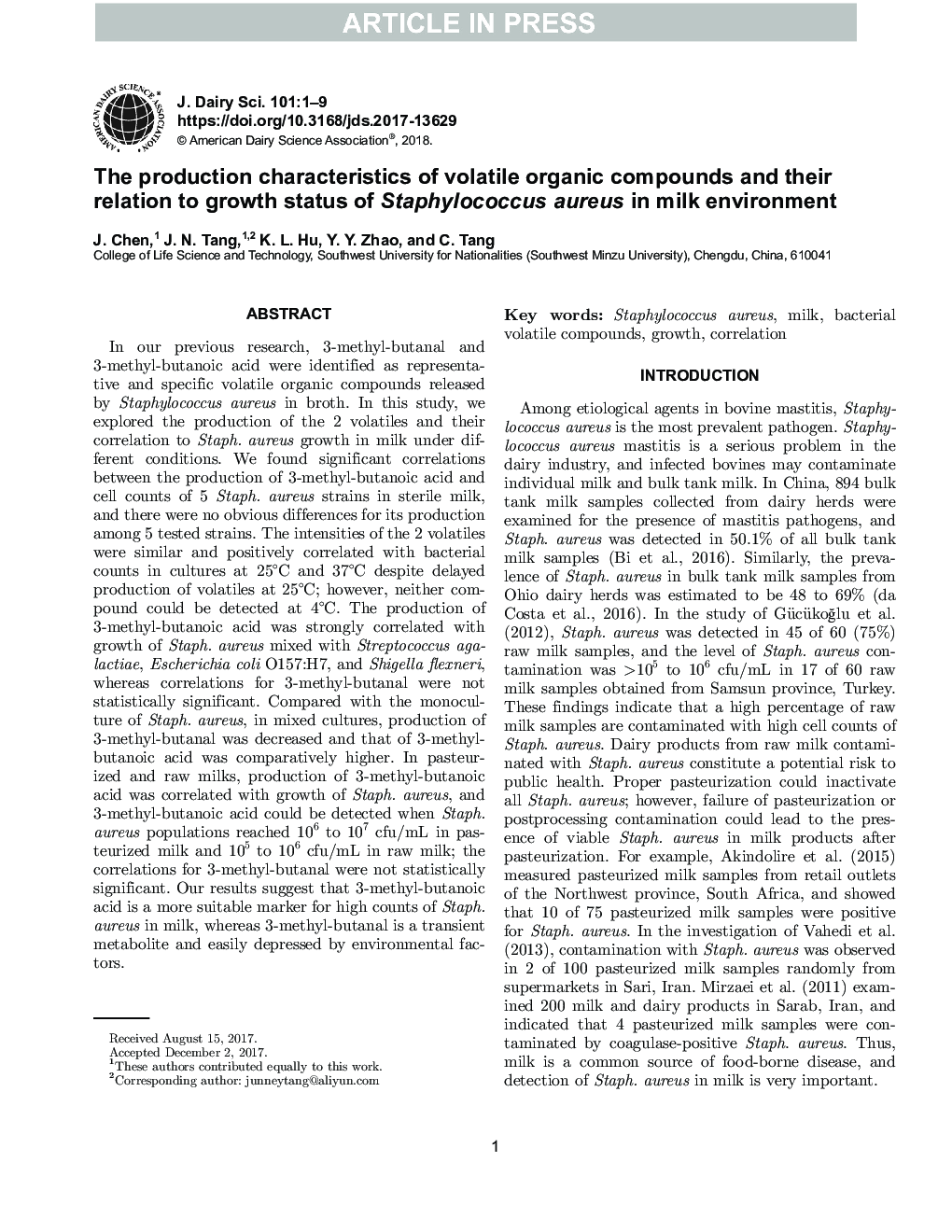| Article ID | Journal | Published Year | Pages | File Type |
|---|---|---|---|---|
| 8501088 | Journal of Dairy Science | 2018 | 9 Pages |
Abstract
In our previous research, 3-methyl-butanal and 3-methyl-butanoic acid were identified as representative and specific volatile organic compounds released by Staphylococcus aureus in broth. In this study, we explored the production of the 2 volatiles and their correlation to Staph. aureus growth in milk under different conditions. We found significant correlations between the production of 3-methyl-butanoic acid and cell counts of 5 Staph. aureus strains in sterile milk, and there were no obvious differences for its production among 5 tested strains. The intensities of the 2 volatiles were similar and positively correlated with bacterial counts in cultures at 25°C and 37°C despite delayed production of volatiles at 25°C; however, neither compound could be detected at 4°C. The production of 3-methyl-butanoic acid was strongly correlated with growth of Staph. aureus mixed with Streptococcus agalactiae, Escherichia coli O157:H7, and Shigella flexneri, whereas correlations for 3-methyl-butanal were not statistically significant. Compared with the monoculture of Staph. aureus, in mixed cultures, production of 3-methyl-butanal was decreased and that of 3-methyl-butanoic acid was comparatively higher. In pasteurized and raw milks, production of 3-methyl-butanoic acid was correlated with growth of Staph. aureus, and 3-methyl-butanoic acid could be detected when Staph. aureus populations reached 106 to 107 cfu/mL in pasteurized milk and 105 to 106 cfu/mL in raw milk; the correlations for 3-methyl-butanal were not statistically significant. Our results suggest that 3-methyl-butanoic acid is a more suitable marker for high counts of Staph. aureus in milk, whereas 3-methyl-butanal is a transient metabolite and easily depressed by environmental factors.
Related Topics
Life Sciences
Agricultural and Biological Sciences
Animal Science and Zoology
Authors
J. Chen, J.N. Tang, K.L. Hu, Y.Y. Zhao, C. Tang,
